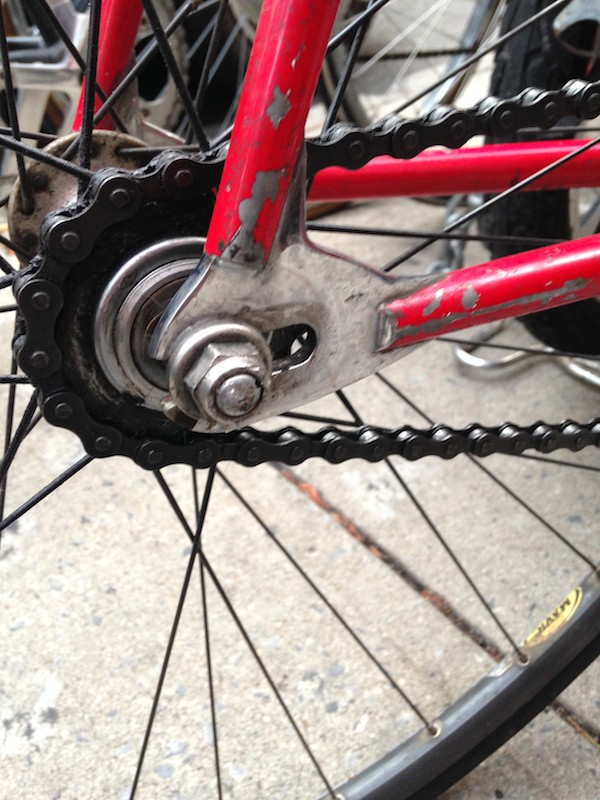How Fast Eddie got his bike back
 Tue, May 12, 2015
Tue, May 12, 2015  Last November I had the pleasure of meeting “Fast Eddie” Williams when I made a brief visit to New York. (Picture above.) Eddie is something of a legend as a bike messenger in New York City.
Last November I had the pleasure of meeting “Fast Eddie” Williams when I made a brief visit to New York. (Picture above.) Eddie is something of a legend as a bike messenger in New York City.
Eddie has been a bike messenger since 1983. It was a handful of New York bike messengers, the likes of Fast Eddie that started the whole fixed wheel craze that has spread worldwide.
Eddie’s bike was a ‘dave moulton’ custom track frame that I had built in 1983. He bought it in 1998 from the original owner who had raced the bike on the velodrome at Trexlertown, Pennsylvania.

That evening in November when I met Eddie and some of his friends, in Brooklyn where he lives. He proudly showed me his bike, and I realized this was a different kind of relationship between a bike and its owner.
All bike enthusiasts are passionate about their machines, but for Eddie this bright red bike was an extension of the man himself.
 This was his working bike, his means to make a living.
This was his working bike, his means to make a living.
Still with the original paint that I personally applied in 1983, now chipped and battered from its hard working life.
But that was fine with me, the bike had character, like the man who rode it.
Then right after Christmas last year, I got the news Eddie’s bike had been stolen. Eddie was devastated. He had left it un-attended for a brief moment and it was gone.
This was almost akin to someone stealing Willie Nelson’s guitar. He had lost his means to make a living.
On my bike registry next to the listing of Eddie’s bike #2833, I put the words “Stolen, contact Dave.” In red type. I thought the bike might be found quite quickly as it was such a unique bicycle and a very large frame that few could ride.
 But it wasn’t found, and the weeks, then months rolled by.
But it wasn’t found, and the weeks, then months rolled by.
Then out of the blue last Saturday, May 9th. I got an email from a Joe Jameson.
He had seen this red ‘dave moulton’ frame with a $200 price tag in his local bike shop in Queens, NY.
He noted the serial number and went online to my bike registry to check on it.
He saw the “Stolen” tag, and immediately contacted me.
I contacted Eddie and on Sunday he went to the bike shop armed with a copy of the police report that had the serial number on it. I spoke with Eddie Sunday evening, and he was one happy man, he had got the frame back. It had been stripped and the parts gone. However, Eddie had parts and had already built the bike back up again.
I asked him if he found out who stole it, and all he would say is “Some young kids took it.” I didn’t push the issue, all I cared about is that the bike, or at least the frame was back where it belonged. I am glad it was found before some other innocent person shelled out money for it.
I’m glad the “Stolen” tag on my bike registry had worked, thanks to Joe Jameson. Most of all I’m just pleased that Eddie got his bike back.
To Share click "Share Article" below
 Dave Moulton | Comments Off |
Dave Moulton | Comments Off | 





































